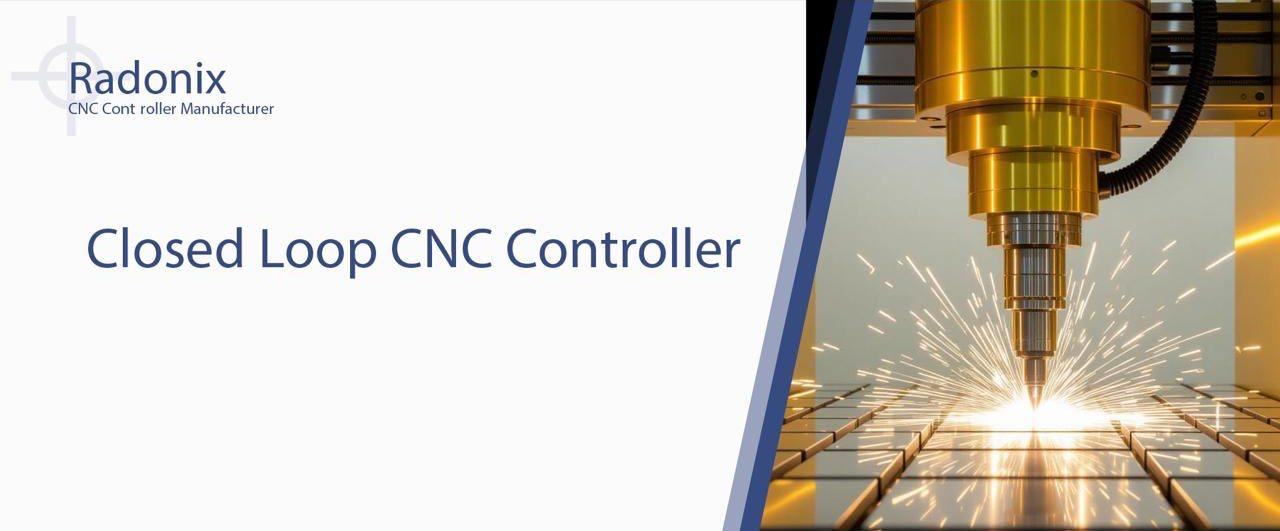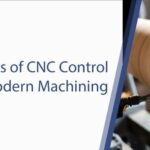In the ever-evolving world of manufacturing and automation, precision is paramount. As industries push the boundaries of what’s possible, the demand for advanced control systems has skyrocketed.
Enter the closed loop CNC controller—a game-changer that ensures unparalleled accuracy, efficiency, and reliability.
At Radonix, we specialize in cutting-edge CNC solutions, and in this comprehensive guide, we’ll dive deep into what a closed-loop CNC controller is, how it works, its benefits, applications, and why it’s essential for modern manufacturing.
Whether you’re a seasoned engineer or a business owner exploring automation options, this article will equip you with the knowledge to make informed decisions.
If you’re searching for “closed loop CNC controller explained” or “benefits of closed loop vs open loop CNC,” you’ve come to the right place. We’ll address common questions like how these systems enhance machine performance and why they’re ideal for high-precision tasks.
What is a Closed-Loop CNC Controller?
A closed-loop CNC controller is a sophisticated control system used in Computer Numerical Control (CNC) machines.
Unlike traditional open loop systems, which operate on predefined commands without real-time feedback, closed loop controllers incorporate sensors and feedback mechanisms to monitor and adjust operations dynamically.
At its core, a closed loop CNC controller uses encoders, resolvers, or other feedback devices to track the actual position, speed, and torque of the machine’s axes. This data is continuously fed back to the controller, which compares it against the desired setpoint.
If there’s any deviation—caused by factors like tool wear, material inconsistencies, or external disturbances—the system automatically corrects it. This feedback loop ensures that the machine performs exactly as programmed, minimizing errors and maximizing output quality.
For those querying “closed loop CNC controller definition,” think of it as a self-correcting brain for your CNC machine. It’s particularly valuable in environments where precision tolerances are non-negotiable, such as aerospace, automotive, and medical device manufacturing.
Radonix.com offers a range of closed-loop controllers designed to integrate seamlessly with various CNC setups, providing robust performance even in demanding conditions.
How Does a Closed-Loop CNC Controller Work?
Understanding the mechanics of a closed-loop CNC controller is key to appreciating its superiority.
Let’s break it down step by step.
- Command Input: The process begins with the CNC program, typically written in G-code or M-code, which dictates the machine’s movements. The controller interprets these commands and sends signals to the motors or actuators.
- Actuation and Movement: Servo motors or stepper motors with enhanced capabilities drive the machine’s axes. In a closed loop system, these motors are equipped with feedback sensors.
- Feedback Mechanism: Sensors like optical encoders or hall-effect devices measure the actual output. For instance, an encoder might count pulses to determine precise positioning down to microns.
- Error Detection and Correction: The controller compares the feedback data with the commanded values using algorithms such as PID (Proportional-Integral-Derivative) control. If an error is detected—say, due to backlash or thermal expansion—the system adjusts the input signals in real-time.
- Output Optimization: This continuous loop ensures the machine adapts to variables, maintaining consistency throughout the operation.
For users asking “how a closed-loop CNC controller improves accuracy,” the answer lies in this real-time adjustment. Traditional open-loop systems might drift over time, but closed-loop ones maintain tight tolerances, often achieving accuracies of 0.001 inches or better.
At Radonix, our closed-loop CNC controllers feature advanced PID tuning and adaptive algorithms, making them user-friendly for both novices and experts. Integration with software like Mach3 or LinuxCNC further enhances their functionality.
Advantages of Closed-Loop CNC Controllers
Why choose a closed-loop CNC controller over its open-loop counterpart?
The benefits are numerous and impactful.
- Enhanced Precision and Accuracy: By constantly monitoring and correcting, these controllers eliminate cumulative errors, ensuring parts meet exact specifications every time.
- Improved Reliability: Feedback systems detect issues early, preventing machine downtime and reducing scrap rates. This is crucial for high-volume production.
- Higher Speeds and Efficiency: With real-time adjustments, machines can operate at optimal speeds without sacrificing quality, boosting throughput.
- Better Handling of Disturbances: External factors like vibration or load changes are automatically compensated for, making them ideal for complex machining.
- Energy Efficiency: Precise control means less wasted motion, leading to lower energy consumption and operational costs.
Studies show that implementing closed-loop controls can reduce error rates by up to 90% compared to open-loop systems. Radonix.com’s models also include features like fault diagnostics and remote monitoring, adding layers of convenience.
Closed Loop vs Open Loop CNC Controllers: A Detailed Comparison
To truly grasp the value of closed loop CNC controllers, let’s compare them head-to-head with open loop systems.
| Feature | Closed Loop CNC Controller | Open Loop CNC Controller |
| Feedback Mechanism | Real-time sensors for continuous monitoring | No feedback; relies on initial commands |
| Accuracy | High (micron-level precision) | Moderate (prone to drift and errors) |
| Error Correction | Automatic and dynamic | Manual adjustments required |
| Speed Capability | High speeds with maintained accuracy | Limited to avoid inaccuracies |
| Cost | Higher initial investment | Lower upfront cost |
| Applications | Precision machining, aerospace, medical | Simple tasks like basic milling or routing |
| Reliability | Excellent in variable conditions | Good for stable, low-precision jobs |
Transitioning from open to closed loop often involves upgrading motors to servos and adding encoders. Radonix.com provides kits that make this upgrade straightforward, with plug-and-play compatibility.
Applications of Closed-Loop CNC Controllers
Closed-loop CNC controllers find applications across diverse industries, each benefiting from their precision.
- Aerospace: Manufacturing turbine blades and structural components requires zero tolerance for errors. Closed-loop systems ensure compliance with stringent standards.
- Automotive: From engine parts to custom prototypes, these controllers handle complex geometries with ease.
- Medical Devices: Producing implants and surgical tools demands biocompatibility and precision—areas where feedback loops shine.
- Electronics: PCB milling and component assembly benefit from the accuracy to avoid short circuits or misalignments.
- Woodworking and Metalworking: Even in traditional trades, closed-loop controllers enable intricate designs and repeatability.
Emerging trends include integration with AI for predictive maintenance, further expanding their utility.
Choosing the Right Closed-Loop CNC Controller
Selecting a closed-loop CNC controller involves several considerations to match your needs.
- Compatibility: Ensure it works with your existing machine, motors, and software.
- Resolution and Speed: Look for high-resolution encoders and fast processing for smooth operations.
- Scalability: Opt for systems that can handle multiple axes and future expansions.
- User Interface: Intuitive software reduces the learning curve.
- Support and Warranty: Choose reputable brands like Radonix.com for reliable after-sales service.
Common pitfalls to avoid: Overlooking power requirements or skimping on sensor quality, which can undermine performance.
Installation and Maintenance Tips
Proper installation is crucial for optimal performance.
- Wiring and Setup: Follow manufacturer guidelines to connect feedback devices securely.
- Calibration: Use built-in tools to tune PID parameters.
- Maintenance: Regularly clean sensors and check for wear. Software updates from Radonix.com keep your system current.
Troubleshooting common issues like encoder faults involves diagnostic modes in the controller.
Future Trends in Closed-Loop CNC Technology
The future looks bright for closed-loop CNC controllers. Integration with IoT enables remote monitoring, while machine learning algorithms predict and prevent failures. Hybrid systems combining closed-loop with additive manufacturing are on the rise.
Conclusion
In summary, a closed-loop CNC controller is not just an upgrade—it’s a necessity for precision-driven industries. From enhanced accuracy to cost savings, the advantages are clear. At Radonix.com, we’re committed to providing top-tier solutions that empower businesses to thrive.
If you’re ready to implement a closed-loop system, explore our range today. Contact us for personalized advice and take your manufacturing to the next level.
Contact Us:
- E-Mail: info@radonix.com
- Phone: +90 (553) 920 5500








